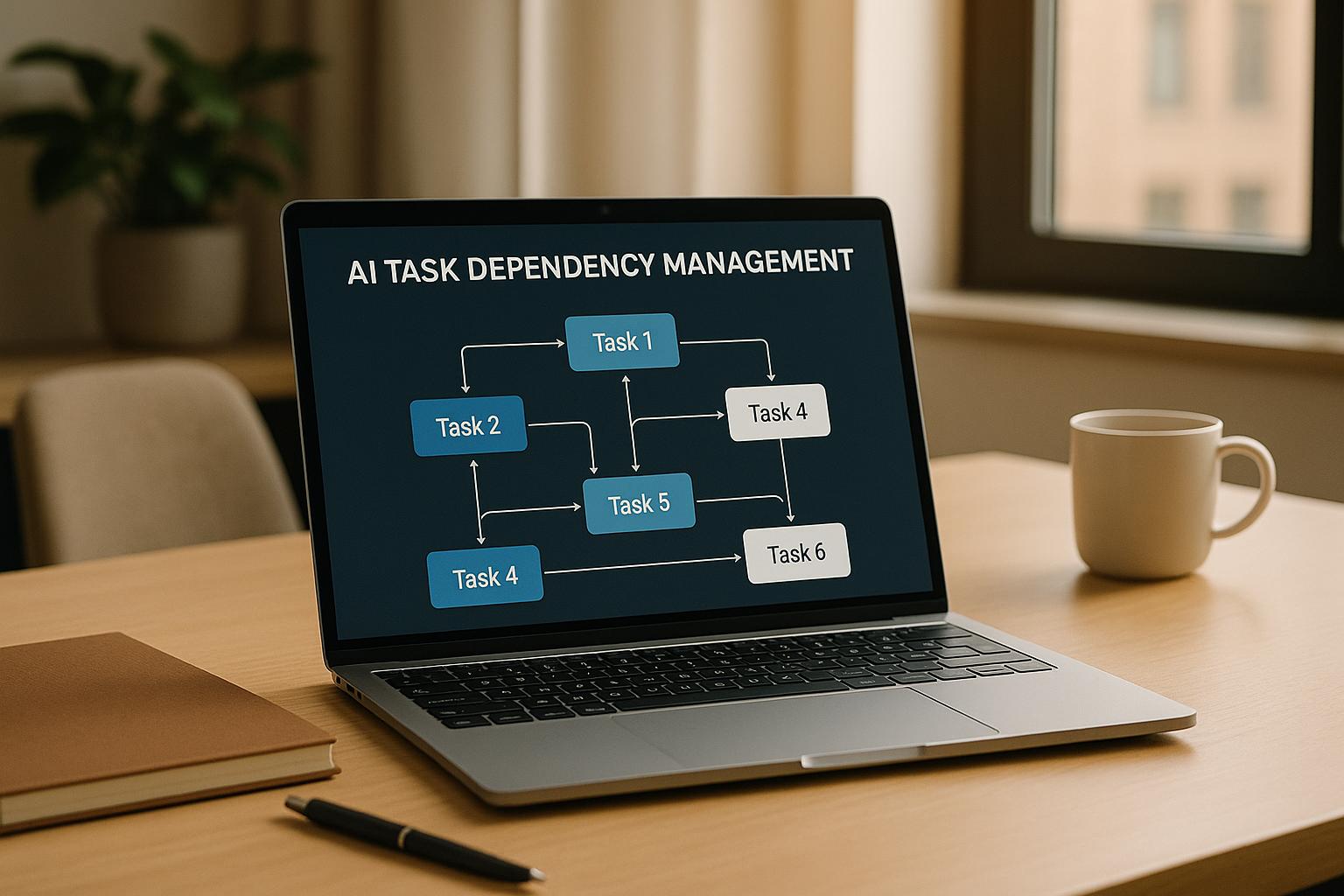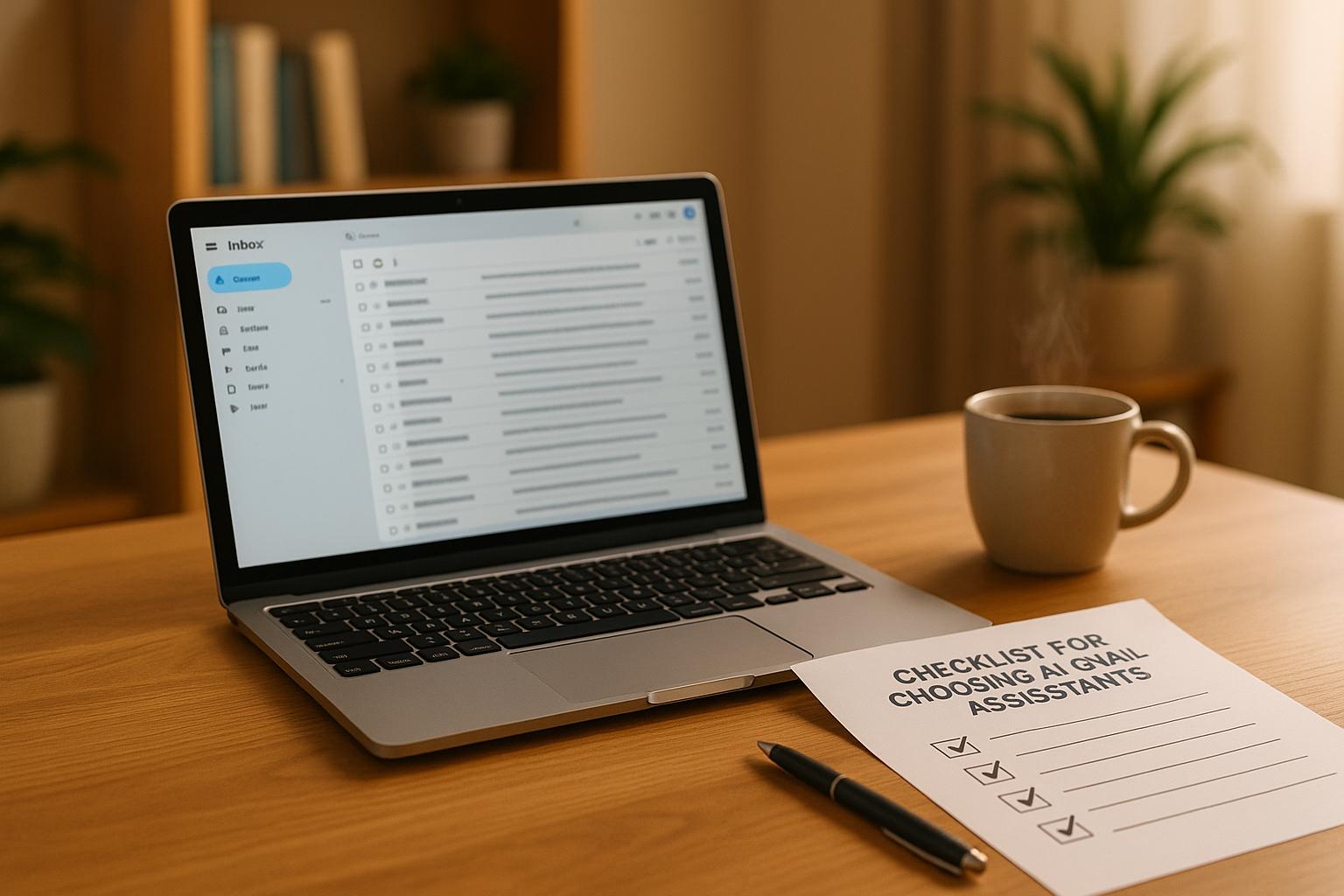AI dashboards simplify reporting by turning raw data into easy-to-understand visuals, accessible through natural language commands. Teams save time by automating data analysis and visualization, eliminating the need for technical expertise or reliance on analysts. These tools integrate multiple data sources, enable real-time collaboration, and provide predictive insights to help teams make faster, informed decisions.
Key benefits include:
- Data accessibility: Non-technical users can query data with simple questions.
- Real-time collaboration: Teams work on the same live data, avoiding outdated versions.
- Predictive analytics: Tools forecast trends and recommend actions.
Popular platforms like ThoughtSpot, Akkio, and Zia streamline workflows across departments, while directories like AI for Businesses help organizations find tools tailored to their needs. Small and mid-sized businesses can adopt these solutions affordably, improving efficiency and decision-making without requiring large IT budgets.
To get started, identify your reporting challenges and choose a tool that consolidates data, ensures security, and aligns with your team’s goals.
How to Make AI-Powered Interactive Dashboard | Bricks Tutorial

Key Features of AI Dashboards for Collaboration
AI dashboards help teams work smarter by bringing together data in one place, making it easier for everyone to contribute - no matter their technical know-how.
Integration of Multiple Data Sources
Businesses often juggle multiple platforms like CRM systems, ERP tools, marketing software, and finance apps. AI dashboards bring all of these together into a single, unified view. This simplifies how teams manage data and improves the way they collaborate.
Take Lume AI, for instance. It automates data mapping with features like auto-mapping and instant schema updates, while also offering predictive analytics to optimize workflows. Deepnote takes a different approach, providing an interactive data science notebook where team members can collaborate in real time, combining code, visualizations, and text seamlessly. On the other hand, ThoughtSpot pulls together data from various sources, offering insights that span multiple platforms. Glean AI focuses on financial data, delivering automated spend intelligence to streamline budgeting and expenses. Lastly, Zia, Zoho’s AI assistant, taps into the full suite of Zoho’s business tools to boost productivity and aid decision-making. (Source: aiforbusinesses.com)
How AI Dashboards Improve Team Workflows
AI dashboards break down technical barriers, streamline collaboration, and provide forward-looking insights that enhance teamwork.
Making Data Accessible to Everyone
AI dashboards with natural language processing make it easier for everyone on the team to interact with data. Instead of relying on analysts, team members can simply type questions like, "What were our top-performing products last quarter?" and instantly view clear visualizations. Tools like DataSquirrel offer no-code interfaces that simplify tasks such as cleaning, analyzing, and visualizing data. This hands-on accessibility allows marketing managers, sales directors, and operations leads to build custom dashboards, tweak visualizations, and share reports on their own. By removing technical hurdles, these tools create a more collaborative and efficient environment.
Real-Time Collaboration for Distributed Teams
For teams spread across different locations, cloud-based AI dashboards ensure everyone is working with the same up-to-date information. Multiple users can interact with the data simultaneously - adjusting filters or changing date ranges - and these updates appear instantly for all team members. This real-time synchronization eliminates confusion caused by outdated versions and allows teams to focus on meaningful, data-driven discussions. Whether it’s during a product launch or while tracking the progress of a campaign, these tools keep everyone aligned and ready to make quick decisions.
Planning Ahead with Predictive Insights
AI dashboards go beyond just showing current data - they help teams prepare for the future with predictive analytics. Platforms like Akkio and RationaleAI enable teams to create predictive models and receive actionable recommendations, all without needing advanced coding skills. For example, marketing tools like Jacquard and Adzooma use predictive analytics to forecast which campaigns are likely to connect with audiences. In finance, automated insights into expenses and cash flow help teams evaluate different budget scenarios and make smarter resource allocation decisions. These features shift team discussions from just analyzing past performance to planning what steps to take next.
Source: aiforbusinesses.com
sbb-itb-bec6a7e
Best Practices for Implementing AI Dashboards
When it comes to implementing AI dashboards, safeguarding your data is a top priority.
Keep Data Security and Compliance Front and Center
Using cloud-based dashboards can make managing business data more efficient, but it also raises concerns about security. To address this, choose providers that offer enterprise-grade solutions with strong security controls, customization options, and dedicated implementation support. Look for features like indemnification, compliance tools, expert assistance, and seamless integration to ensure your data stays protected.
You’ll also need to pick a deployment option that fits your security requirements. For instance, self-hosted solutions can provide greater control and customization, allowing you to manage your data directly. On the other hand, secure cloud deployments can be an excellent choice if you prefer pre-established security protocols. To add an extra layer of protection, consider using synthetic data for testing purposes, which helps shield sensitive information.
Taking these steps sets the stage for successfully deploying AI dashboards while maintaining the highest standards of security and compliance.
AI for Businesses Directory

Finding the right AI tools for collaborative reporting can feel like a daunting task, especially when trying to balance features with budget constraints. That’s where AI for Businesses steps in - a carefully curated directory designed to help small and medium-sized enterprises (SMEs) and scale-ups discover AI solutions that streamline teamwork and improve efficiency.
This directory builds on the functionality of AI dashboards by simplifying the process of tool selection. It offers a range of options tailored to tasks like creating brand visuals, automating documentation, designing custom graphics, and crafting narratives. For businesses aiming to enhance their reporting processes without requiring hefty IT budgets or advanced technical skills, this platform provides practical solutions.
Some standout tools featured in the directory include:
- Looka: Perfect for designing professional brand visuals to enrich your reports.
- Rezi: Simplifies documentation through automation.
- Stability.ai: Generates custom images and graphics to make data presentations more engaging.
- Writesonic: Helps craft clear and compelling narratives for reports.
Each tool is selected with SMEs in mind, prioritizing ease of use and tangible benefits over unnecessary complexity.
The focus here is on business efficiency, not just listing every AI tool out there. Whether you’re looking to automate repetitive tasks, create visually engaging summaries, or enable seamless collaboration across departments, you’ll find tools organized to meet your specific needs. This directory enhances collaborative reporting by offering solutions that help teams work smarter, not harder.
Access is flexible, with pricing options to suit different business sizes and needs:
- Basic Plan: Free access to a limited selection of tools.
- Pro Plan: Full access to all tools and priority support for $29 per month.
- Enterprise Solutions: Custom plans for larger organizations, including dedicated support and tailored integrations.
For SMEs and scale-ups just starting their journey with AI dashboards, this directory is a game-changer. It cuts through the clutter of endless online options, offering a centralized resource of vetted tools that align with real-world business operations and collaborative workflows. This means less time spent researching and more time focusing on what matters - enhancing efficiency and productivity.
Conclusion
AI dashboards have reshaped the way teams handle collaborative reporting, turning complex data into clear, actionable insights that anyone can grasp, no matter their technical expertise. These tools simplify workflows across various departments - marketing teams can monitor campaign performance alongside sales metrics, finance teams can share budget forecasts that operations teams analyze in real time, and cross-functional projects no longer stumble over outdated or mismatched data. With real-time insights at their fingertips, teams can respond quickly and make decisions rooted in data.
For businesses aiming to stay ahead, adopting AI-powered reporting tools offers more than just a nod to modern technology. When every team member has access to the same up-to-date data, presented in easy-to-understand visuals, it becomes easier to identify opportunities and tackle challenges before they escalate. This leads to faster, more confident decision-making.
Even for small and mid-sized businesses, the barriers to entry are low. These tools now come with flexible pricing and intuitive interfaces, eliminating the need for hefty IT budgets or specialized data science teams. The benefits are clear - less time spent on reporting, greater accuracy, and stronger team alignment.
To take full advantage of these tools, start by pinpointing your biggest reporting challenges. Whether it’s dealing with data silos, slow processes, or miscommunication, there’s likely a dashboard solution tailored to your needs. By addressing these pain points, you’ll not only boost your team’s productivity but also sharpen your business’s competitive edge.
FAQs
How can AI dashboards be tailored to meet my team’s specific reporting needs?
AI dashboards offer the flexibility to match your team’s specific reporting needs. You can choose the exact data sources, metrics, and visualization styles that make the most sense for your goals. Many of these dashboards come with user-friendly drag-and-drop interfaces, making it easy to create custom views and reports - no deep technical expertise required.
On top of that, advanced AI tools can evaluate your team’s workflows and recommend smarter ways to work. For example, they might suggest automating repetitive tasks or spotlight the KPIs that align best with your objectives. By customizing dashboards to fit your workflow, teams can work more efficiently, make better decisions, and free up valuable time.
What security factors should I consider when using AI dashboards for team reporting?
When setting up AI dashboards for collaborative reporting, safeguarding sensitive data and adhering to regulations should be top priorities. First, confirm that the dashboard provider employs strong encryption techniques for both storing and transmitting data. This is a critical step in preventing unauthorized access to your information.
In addition, use role-based access controls to restrict data and feature access based on individual team responsibilities. Regularly review and update these permissions to adapt to changing roles, and keep an eye on usage patterns to detect any irregularities. Finally, schedule regular security audits to uncover and fix potential vulnerabilities, ensuring your workflows remain both secure and seamless.
How do AI dashboards integrate data from multiple sources, and how does this improve team collaboration?
AI dashboards bring data together from multiple sources - spreadsheets, databases, and even third-party apps - into one easy-to-navigate platform. This eliminates the hassle of jumping between tools or manually piecing together reports, giving teams access to real-time insights all in one place.
By centralizing data, these dashboards help everyone stay on the same page, working with the most current information available. This not only speeds up decision-making but also reduces mistakes and streamlines workflows. On top of that, many AI dashboards allow for customizable views and automated reports, so team members can zero in on their priorities while staying connected to the bigger picture.


